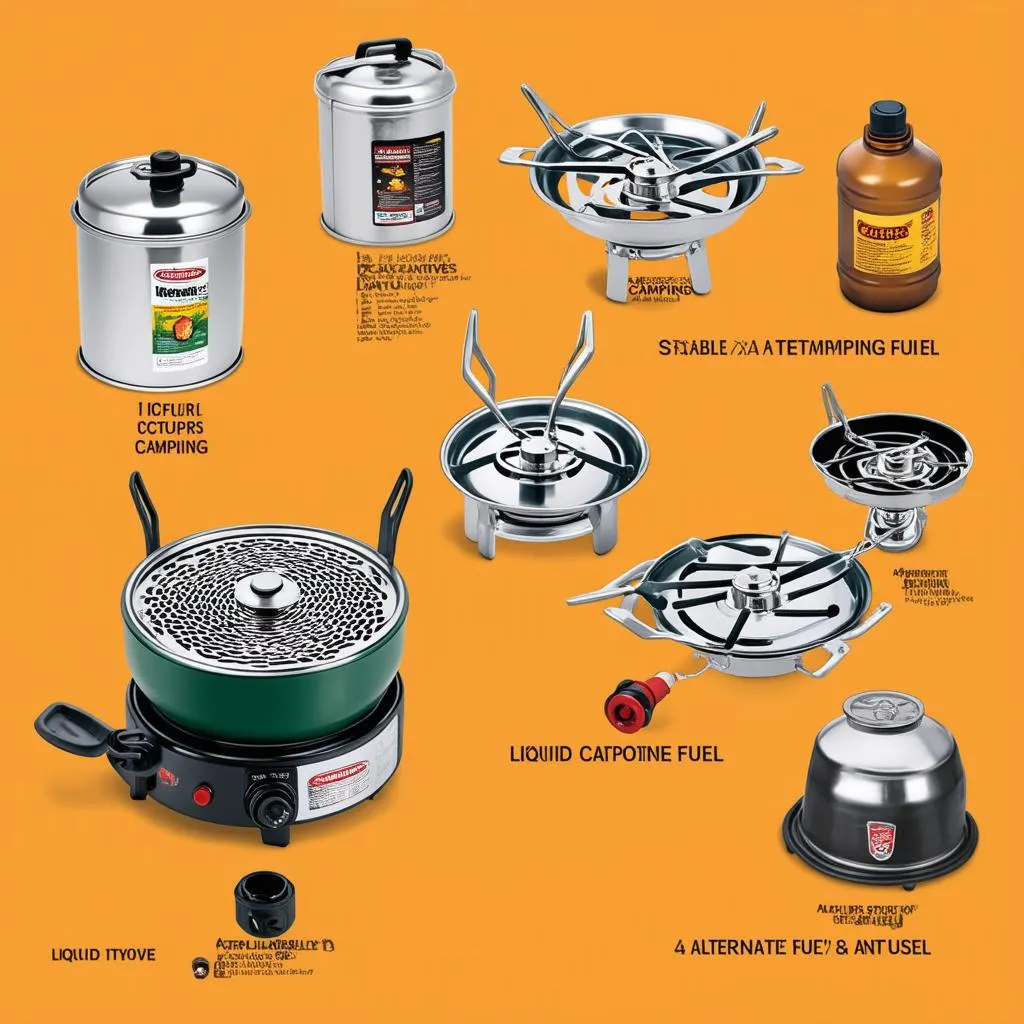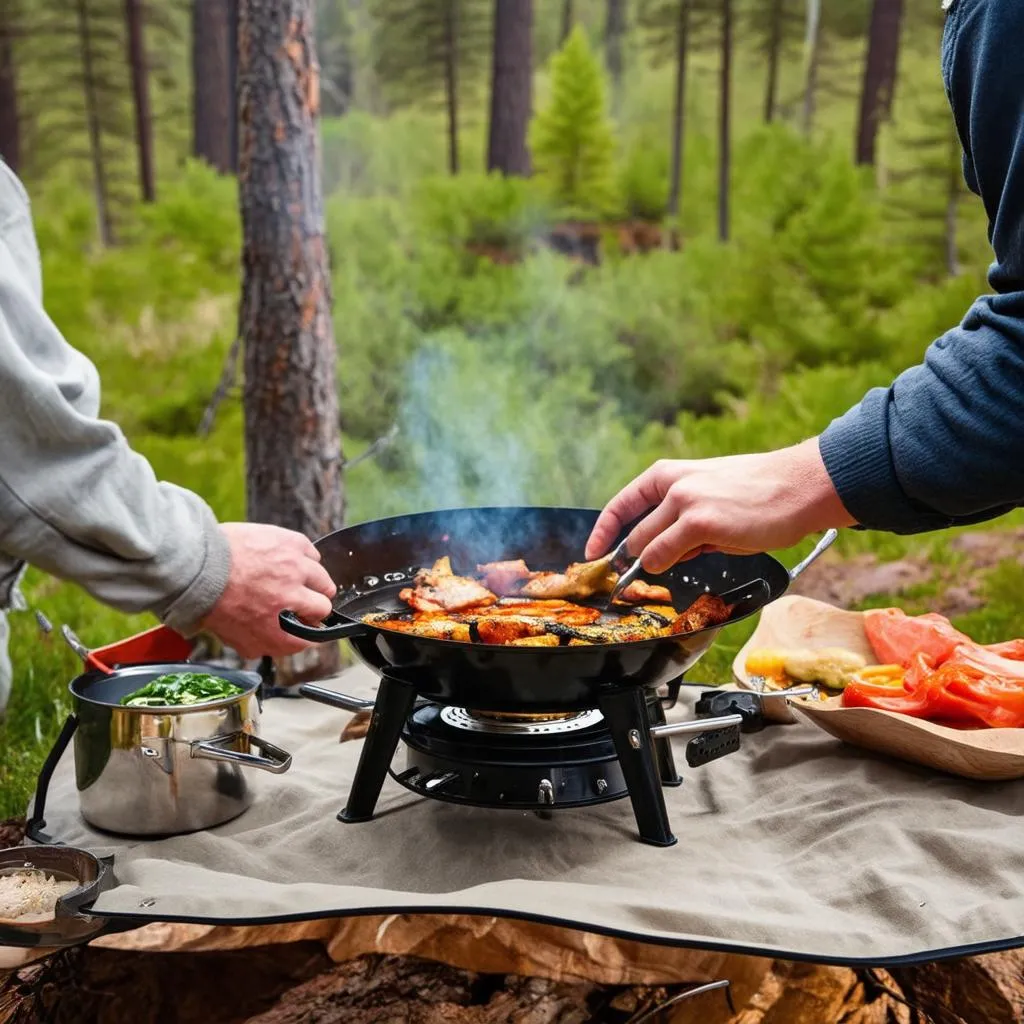Imagine this: you’re nestled in a secluded campsite, surrounded by towering redwoods in Yosemite National Park, the gentle murmur of the Merced River filling the air. The sun dips below the horizon, painting the sky in hues of orange and purple, and a symphony of crickets begins. As hunger pangs strike, you realize it’s time to cook up a well-deserved meal. This is where your trusty companion, the portable camping stove, comes into play.
Why Choose a Portable Camping Stove?
Whether you’re a seasoned backpacker or a weekend warrior, a portable camping stove can be the difference between a good trip and a fantastic one. Here’s why:
- Convenience: No more struggling to start a fire with damp wood. Portable stoves offer a quick and easy way to cook your meals, freeing up time to enjoy the scenery.
- Versatility: From boiling water for coffee to whipping up gourmet camp meals, these stoves are surprisingly versatile.
- Safety: In areas with fire restrictions, a portable stove can be your only option for cooking. They also offer greater control over your cooking fire compared to traditional campfires.
Types of Portable Camping Stoves
Choosing the right stove depends on your individual needs and cooking style. Here’s a breakdown of the most popular types:
- Canister Stoves: Lightweight and compact, these stoves are ideal for backpacking and short trips. They use pre-filled fuel canisters, making them incredibly convenient.
- Liquid Fuel Stoves: Known for their reliability and fuel efficiency, liquid fuel stoves are a popular choice for longer expeditions and cold weather camping. They burn white gas, which is readily available at most outdoor retailers.
- Alternative Fuel Stoves: For the eco-conscious camper, there are stoves that run on wood, charcoal, or even solar power. While they may require a bit more effort, they offer a sustainable way to cook outdoors.
 Different types of camping stoves
Different types of camping stoves
Navigating the World of Camping Stoves: Key Features to Consider
1. Weight and Packability: If you’re backpacking, every ounce counts. Look for lightweight stoves that pack down small.
2. Burner Power (BTUs): A higher BTU rating means faster boiling times. Consider how many people you’ll be cooking for and what types of meals you’ll be preparing.
3. Fuel Efficiency: How long a stove can run on a single fuel canister or tank is an important factor, especially for longer trips.
4. Wind Resistance: Some stoves come with built-in windshields or have designs that offer better wind resistance, crucial for cooking in exposed areas.
5. Ease of Use: Look for stoves with intuitive designs and easy-to-use controls.
Setting Your Budget: Camping Stove Price Range
Camping stoves can range in price from budget-friendly options to high-end models. Here’s a general guideline:
- Budget-friendly: $20-$50 (basic canister stoves)
- Mid-range: $50-$150 (more durable canister stoves, entry-level liquid fuel stoves)
- High-end: $150+ (feature-rich liquid fuel stoves, multi-fuel stoves)
Planning Your Culinary Adventure: Essential Tips for Cooking with a Camping Stove
- Practice at Home: Familiarize yourself with your stove before heading out on your trip.
- Pack Smart: Organize your cooking gear in a dedicated container or bag for easy access.
- Start Small: Begin with simple recipes and gradually work your way up to more elaborate meals.
- Clean Up Responsibly: Dispose of fuel canisters and wastewater properly.
 Preparing a meal on a camping stove
Preparing a meal on a camping stove
Frequently Asked Questions (FAQs)
Q: Can I use a camping stove inside my tent?
A: Absolutely not! Using a stove inside a tent is extremely dangerous and can lead to carbon monoxide poisoning. Always cook in a well-ventilated area.
Q: What kind of fuel is best for my camping stove?
A: The best fuel depends on the type of stove you have. Canister stoves use butane/propane canisters, while liquid fuel stoves typically use white gas. Always refer to your stove’s manual for the recommended fuel type.
Q: How do I clean my camping stove?
A: Regular cleaning will prolong the life of your stove. Use a damp cloth to wipe down the exterior and a soft brush to remove any debris from the burner.
Embrace the Joy of Outdoor Cooking
“A good meal shared with good company under a starlit sky is a recipe for pure happiness,” says renowned travel blogger, Emily Walker, author of “Wanderlust and Whisk W Wonders.” And she couldn’t be more right. A portable camping stove opens up a world of culinary possibilities in the great outdoors.
So, pack your bags, grab your stove, and embark on a journey that nourishes both body and soul. And remember, the most important ingredient in any camping meal is the joy of sharing it with loved ones amidst the beauty of nature. Happy travels!
Don’t forget to check out travelcar.edu.vn for more helpful tips and resources for planning your next outdoor adventure! We’ve got you covered, from choosing the perfect campsite to finding the most scenic hiking trails.